Il tocco di Pigmalione. Rubens e la scultura a Roma

Dal 14 November 2023 al 18 February 2024
Roma
Luogo: Galleria Borghese
Indirizzo: Piazzale Scipione Borghese 5
Orari: dal martedì alla domenica. Dalle 9.00 alle 19.00. Ultimo ingresso alle ore 17.45 Giorni di chiusura: 25 dicembre, 1 gennaio. La biglietteria è aperta dalle ore 8.30 fino a 1 ora prima della chiusura del museo
Curatori: Francesca Cappelletti e Lucia Simonato
Costo del biglietto: INTERO € 13,00 (ultimo turno € 8,00) RIDOTTO 18-25 anni € 2,00 GRATUITO minori di 18 anni
Telefono per informazioni: +39 06 8413979
E-Mail info: ga-bor@cultura.gov.it
Sito ufficiale: http://galleriaborghese.beniculturali.it
Il passaggio romano e la contrastata commissione per la chiesa della Vallicella, oltre al suo ruolo nella rete di pittori e intellettuali stranieri vicini ai Lincei di Federico Cesi, hanno ricevuto una grande attenzione da parte degli studiosi.
Nulla sembra sfuggire alla sua capacità di osservazione e al suo desiderio di imparare e di interpretare gli antichi maestri: i suoi disegni rendono le opere che studia vibranti, aggiungono movimento e sentimento ai gesti e alle espressioni dei personaggi. Rubens mette in atto nelle storie lo stesso processo di vivificazione del soggetto che utilizza nel ritratto: i membri della famiglia Gonzaga escono ravvivati dal suo pennello mentre i loro sguardi si dirigono verso lo spettatore, ma la stessa cosa succede con i marmi e i rilievi e con gli esempi celebri della pittura rinascimentale. A Roma, con le vestigia del mondo antico, accade la stessa cosa: Rubens disegna, a sanguigna, quindi con un carboncino rosso che gli restituisce il colore, la famosa statua dello Spinario. Il foglio, che riprende la posa da due punti di vista diversi, sembra davvero eseguito da un modello vivente, invece che da una statua, tanto da far immaginare ad alcuni studiosi che il pittore abbia utilizzato un ragazzo atteggiato nello stesso modo della statua.
Questo processo di animazione dell’antico, per quanto eseguito nel primo decennio del secolo, sembra anticipare le mosse degli artisti che, nei decenni successivi al suo passaggio romano, verranno definiti barocchi.
Come le intuizioni formali e iconografiche di Rubens filtrino nel ricco e variegato mondo romano degli anni Venti è un problema che non è stato ancora affrontato in modo sistematico dagli studi. La presenza in città di pittori e scultori che avevano avuto modo di formarsi con lui ad Anversa (come Van Dyck e Georg Petel) o che già erano entrati in contatto con le sue opere nel corso della loro formazione (come Duquesnoy e Sandrart) garantì di certo l’accessibilità dei suoi modelli a una generazione di artisti italiani, i quali, non meno del fiammingo, si erano ormai abituati a confrontarsi con l’Antico alla luce dei contemporanei esempi pittorici e sulla base di un rinnovato studio della Natura. Tra tutti, Bernini: i suoi gruppi borghesiani, realizzati negli anni Venti, rileggono celebri statue antiche (l’Apollo del Belvedere) per donare loro movimento e traducono in carne il marmo, come avviene nel Ratto di Proserpina.
In mostra si potrà dunque misurare quanto questi capolavori siano in debito con il naturalismo rubensiano, così come lo furono di certo altre sculture giovanili dell’artista, quali la Carità vaticana nella Tomba di Urbano VIII, già giudicata dai viaggiatori europei del tardo Settecento ‘una balia fiamminga’. In questo contesto figurativo, la tempestiva circolazione di stampe, tratte dalle prove grafiche rubensiane, accelerò per tutti gli anni Trenta il dialogo sollecitando operazioni editoriali come la Galleria Giustiniana, dove le statue antiche prendono ormai definitivamente vita secondo un effetto già definito ‘Pigmalione’ dalla critica.
La mostra progettata per la Galleria Borghese, recuperando alcune di queste linee di ricerca, vuole sottolineare il contributo straordinario dato da Rubens a una nuova concezione dell’antico, dei concetti di naturale e di imitazione, alle soglie del Barocco, mettendo a fuoco in cosa consista la novità dirompente del suo stile nel primo decennio a Roma e come lo studio dei modelli potesse essere inteso come un’ulteriore possibilità di slancio verso un nuovo mondo delle immagini.
Per fare questo la mostra terrà conto non solo delle opere italiane che documentano lo studio appassionato e libero dagli esempi antichi, ma anche della capacità di rileggere gli esempi rinascimentali e di confrontarsi con i contemporanei, approfondendo aspetti e generi nuovi.
SCARICA IL COMUNICATO IN PDF

-
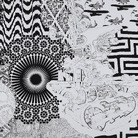 Dal 19 January 2026 al 1 March 2026
Roma | GNAMC | Galleria Nazionale d’Arte Moderna e Contemporanea
Dal 19 January 2026 al 1 March 2026
Roma | GNAMC | Galleria Nazionale d’Arte Moderna e Contemporanea
Maurizio Cannavacciuolo. Promenade
-
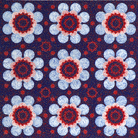 Dal 17 January 2026 al 22 March 2026
Bologna | Museo Civico Medievale
Dal 17 January 2026 al 22 March 2026
Bologna | Museo Civico Medievale
Alessandro Moreschini. L’ornamento non è più un delitto
-
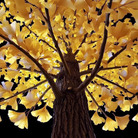 Dal 15 January 2026 al 15 April 2026
Milano | Palazzo Citterio | Ledwall
Dal 15 January 2026 al 15 April 2026
Milano | Palazzo Citterio | Ledwall
Debora Hirsch. Vanishing Trees
-
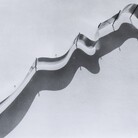 Dal 15 January 2026 al 28 February 2026
Milano | The Pool NYC | Palazzo Fagnani Ronzoni
Dal 15 January 2026 al 28 February 2026
Milano | The Pool NYC | Palazzo Fagnani Ronzoni
I tempi dello sguardo. 90 anni di fotografia italiana in due atti - Il Bianco e il Nero
-
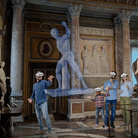 Dal 9 January 2026 al 27 February 2026
Roma | Galleria Borghese
Dal 9 January 2026 al 27 February 2026
Roma | Galleria Borghese
Sguardi oltre il tempo
-
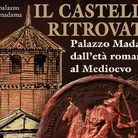 Dal 19 December 2025 al 23 March 2026
Torino | Palazzo Madama - Museo Civico d’Arte Antica
Dal 19 December 2025 al 23 March 2026
Torino | Palazzo Madama - Museo Civico d’Arte Antica
Il castello ritrovato. Palazzo Madama dall’età romana al medioevo


